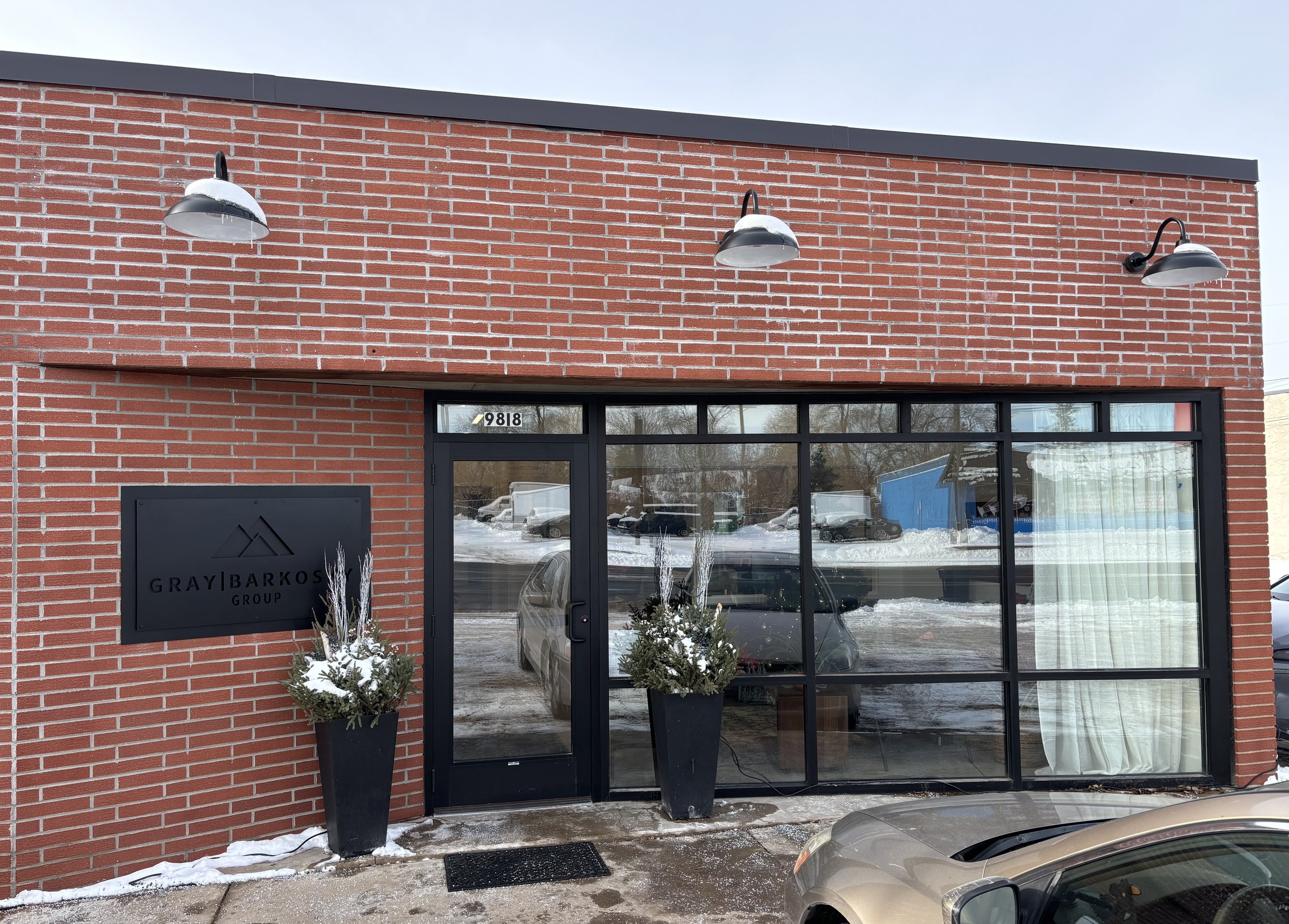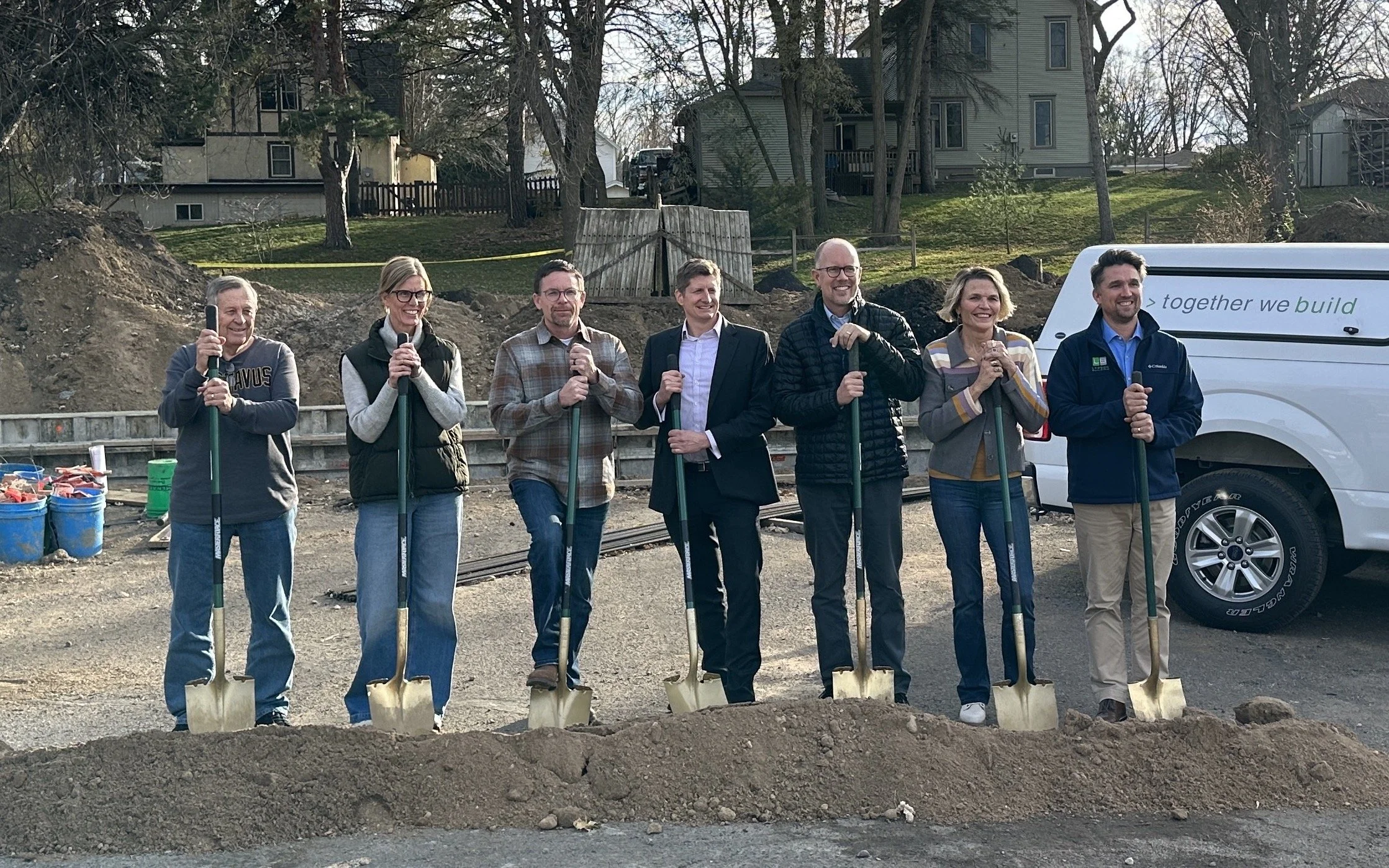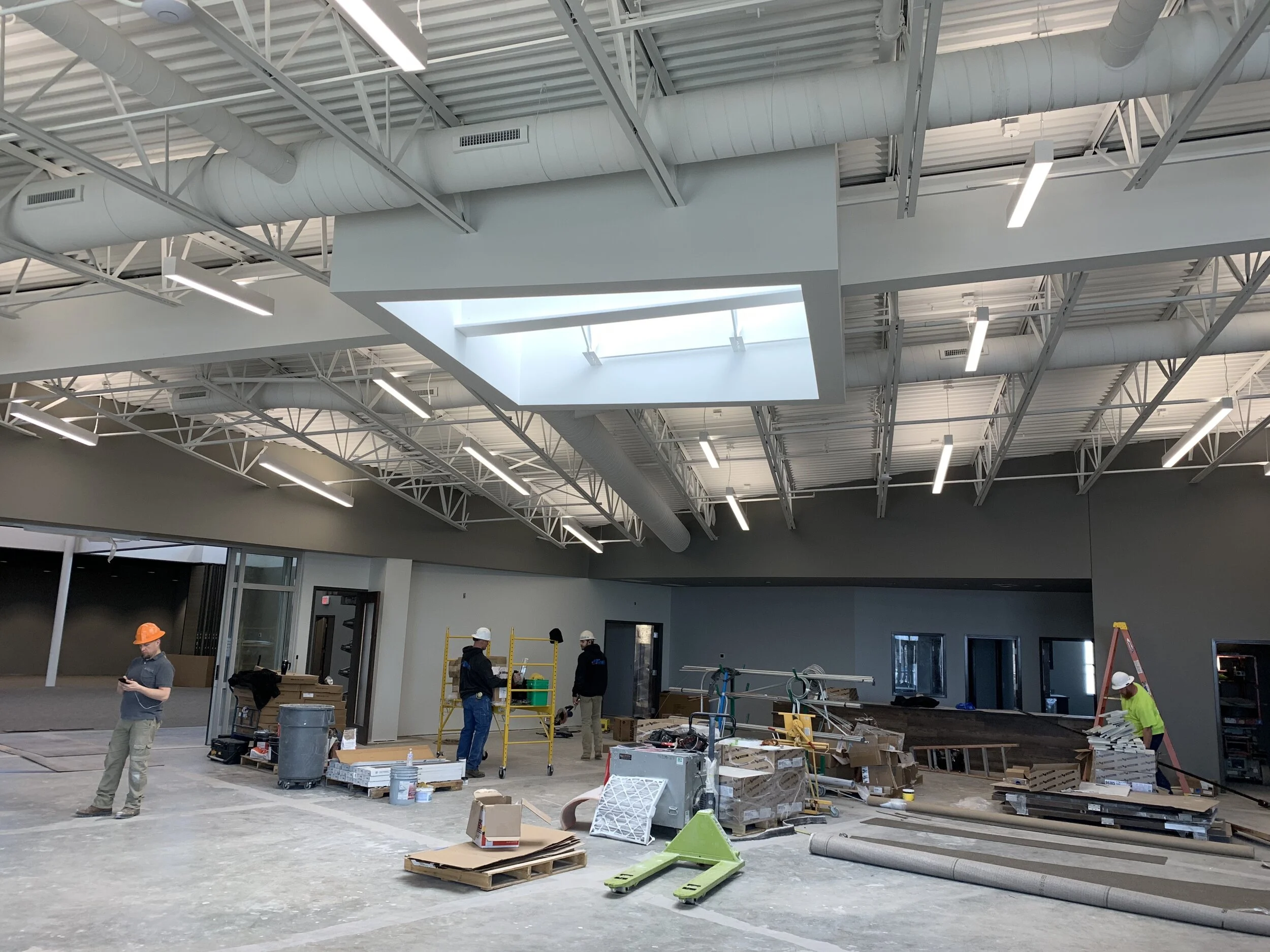Since framing has commenced I should probably get caught up on the foundation work that went on at the end of summer. Instead of boring everyone with the details of
The Design Process is a Process
I had an interaction with someone this week that made me stop to think about peoples understanding of architects and the design process they lead. The design process in architecture is something few people get to experience, and it is different enough from most peoples expectations of design that when drawn into it they are often surprised. There is a tendency to see architects similar to doctors who prescribe a known solution to a known problem. Or even better, tell them what their problem is and give them the corresponding solution, because the patient may not be quite sure what they are suffering from. Or there are also those, who having self-diagnosed, simply are waiting for you to give them the medicine they expect. But design is not like learning a list of symptoms and assigning medicine. Nor is it being able to store up ready solutions from years of experience, simply taking the right one off the shelf. There certainly are architects and designers that might use these methods. They design something for a client, it works and this then becomes the answer they use on subsequent projects. Over time this can become their expertise so to speak. Perhaps they even allow the answer to evolve over time as the solution is forced to change. The desire to jump to quick answers, to have the solution at the beginning, is the constant temptation of every designer. Most likely there will be a level of success in the result, because there are enough similarities to the last project. Understanding a solution gives confidence to solving the same problem the next time. But is it the same problem, the same situation, the same people? Are we allowing ourselves to enter the process of design? And most importantly, are we getting the best result? If all people were the same, perhaps. If all companies were identical, sure.
So what is the design process? It is purposely stepping into unmapped, unfamiliar places, listening and moving forward, not with quick answers, but a set of skills that gradually and thoughtfully shape a response. The process needs to be entered not with prejudices and assumptions, but from the belief that I have never encountered this unique problem before. There will be references, likes, dislikes, precedents, but these should only form a backdrop for the process. The designer has to know how to ask questions and then respond to the answers that usually get more and more complicated, that will often be contradictory, that may keep affecting the direction of the design. The response is rarely a quick answer. The designer has to hold onto solutions lightly and allow these to transform as they continue to gather up the pieces and test ideas. It is a process. It is something like walking through the woods blindfolded, using each tree you feel to inform your steps and to begin to form a direction in your mind. There is a direction, there has to be, but it is not like walking down a paved sidewalk, where you don’t have to think about where you are going. You can see how this approach might result in a different solution than taking the answer from the last project and simply modifying it for the current client. So why is the method of repetition, by far, the more common practice? I think it feels safe. We know ahead of time what we are getting, we know that if we like that other project, or if that other project seems to work well, like a product, we want to purchase that known thing. Design as a process, however, asks you to go into an unknown place to find a solution that is often unexpected, and this feeling can be unnerving. This process takes time and the solution is something, as stated earlier, that gradually takes shape through the process. This gives space for creativity and authenticity to come forward. I would argue the process of design can result in something that brings forth the distinctiveness of a situation, a place and those individuals involved.
Come to think of it, the design process is perhaps more like real life. Learning to maneuver through life is rarely about quick answers, but developing a growing set of ideas and thoughts that gradually mature you and shape your direction. Even those answers that are available to us at the beginning usually don’t make sense until we have made our way a little farther along and tested them a bit. Perhaps the allure of the fast answer, the pre-designed package, the safe choice, has more to do with easing our own feelings of wandering in life. Design as a process is a hard thing to sell. “ Let's wander together for a while.” It takes confidence, a confidence not in having the answer at the beginning, but a confidence in the process, that a solution will be formed that addresses the unique needs and character of the individual, the family or the company. This is what the experienced designer or architect brings to the table. Let's not pretend about any possible perfection in design here, this is real life, but I believe these are better answers. Remember, each architect will have their own approach to this process, a different outcome, perhaps their own look. It is impossible for a designer to keep themselves out of their work, but that is after all why we are drawn to certain architects and designers. Life is about learning, let's not reduce design anymore than we would our own lives or our own individual identity. In turning to an architect expect a process, expect questions, expect it to be an exercise in self-evaluation, whether an individual, a family or a business. Expect to set aside ready or preconceived answers for the time being, and then enjoy the process for what it is. Discovery.
The Summer We Didn't Build A House
Little did we realize when the delays started back in June while trying to get our foundations in that we would find ourselves in the middle of August before they actually got started.
The 22nd of June we had the footings scheduled to start. I wonder looking back now if the concrete contractor ever really intended to do the work. He showed up on site that day unhappy with the conditions of the excavating. We agreed to have the soil beneath the footings compacted and then tested, after all we wanted our footings on solid ground. He then let us know that we were getting moved down his list of projects and he would be back in probably two weeks. We had the ground compacted and tested and then we waited and the rain began. We fought to keep the excavation dry, we pumped it, we shoveled trenches, and the rain kept coming. The concrete contractor, after a longer delay than originally intended, was finally about ready to show up on site when he called and told me half of his crew quit on him and he was still trying to finish up another project. He put me out another week and said if I could find someone else that I should. We were shocked at this of course. The middle of summer, the busy building season, and we were going to be looking for a new concrete contractor? I tried all the contractors we had originally sent bids to, only one returned my call and said they might be able to fit it in if it were switched to a poured job, his crew better set up for poured work. He would get us a new bid. We tried one other new contractor that would bid it as block. By the end of the week we hadn’t heard back from the first and the second contractor’s bid was way over our original number. Feeling stuck, we told our originally hired contractor we needed him to stick with us and do the work. He showed up the beginning of the next week on site to meet with me and we walked around a very muddy site. Inches of sediment had run into the excavation over the last month and a half. He told me we needed the excavator back to clean it out, he was unable to clean it up himself. I scheduled the excavator for later that week. Half way through that week, my wife and I were having a conversation about how we were coming to terms with all of this delay, trusting God that he had our best. Literally minutes later, I received a text from the concrete contractor that he would be unable to do the work due to his schedule and the ongoing delays of our site. My wife and I sat there stunned. We felt betrayed by this contractor who had strung us along over the last month and a half. Our only current option was the new contractor that was way over the original cost. We began conversations with them while we thought about the cost and ways to reduce it. I kept the appointment for the excavator to come back, but we were feeling serious doubts, and then I got a text out of nowhere. The concrete contractor that had asked to bid the job as poured had sent me his updated bid numbers. They were just a little over our original numbers. I called him back and he committed to start right away. He was fitting us in. He even had someone meet us on site when the excavator came back, checking over the footing elevations and starting to layout string lines. So what was the date that this happened? It was July 30th. About 40 days after our original start date for footings. It was the 10th of August by the time our new concrete contractor had finished his last job and started ours. They poured footings on August 14th. Now they are in the process of getting the formwork for the foundation walls set up, we are starting to see leaves yellow on our property, and I am looking back on this summer and saying what happened?
We are ok with all of this, or we have finally gotten to a place where we are ok with this. It has felt terrible going through it. My sister-in-law compared it to being pregnant, overdue and waiting for labor to begin. We certainly had a hard time responding to people when they asked if work had started. It reminded us of getting phone calls from anxious friends and family years ago when we were one week overdue with our first child. We have learned a lot this summer about working with contractors. We have learned a great deal of patience. But what really happened to us this summer is a little harder to put into words. 40 days is significant in the Bible. It often represents a time of waiting. Noah sat in the ark as it rained non-stop for 40 days. The Israelites waited for 40 days as Moses was on Mt. Sinai receiving the 10 commandments. This waiting drove them to cast the golden calf. The Israelites later wandered in the desert for 40 years. Christ was tempted in the wilderness for 40 days. We certainly can’t hold our 40 days of waiting for footings up to these stories from the Bible, but we can draw some comparisons with our own time of waiting and learning. I can feel some empathy for Noah sitting in the crowded Ark waiting for the rain to stop and for the Israelites in the wilderness wondering what had happened to Moses on the mountaintop. During this 40 days we felt that perhaps this house wasn’t really going to happen, everything that we tried seemed to fail or meet a roadblock. Maybe this wasn’t going to turn out the way we had hoped. We desperately looked for solutions. In the end we realized this house is beyond our doing. Unless the Lord builds the house the workers labor in vain. To release our grip on these things that are only things, to get to a place of peace about our situation, to look beyond, these are the lessons we are learning. And so as we are finally moving forward again, we do so with a new perspective.
From Noah's Ark, Illustrated by Peter Spier
Although, as a family we feel this is where we are supposed to be, we realize that apart from the Lord we can do nothing. In addition, the work he has given us is often hard and requires perseverance and trust and ultimately there comes a point when we must lay our own ambitions on the altar and trust God to have our best interests in mind. The Lord’s concern is ultimately for our hearts, to bring us home to Himself. All that happens here is merely a path. Trust in the Lord with all of your heart and lean not on your own understanding. In all your ways acknowledge him and he will make your paths straight.
I know the feeling of waiting for a home, waiting for it to even begin construction, some sign that it is going to be. The feeling of being without that essential element of home. This is a feeling that shouldn’t go away when the house is built. We are still waiting for our real home in the Lord. This physical home is a stand-in, a temporary covering. Home here must ultimately dematerialize and be resurrected in our hearts in the person of Christ. This is where our truest longings direct us. This summer we have been camping/waiting in our tent shack. There is something about this tenuous shelter that causes us to remember that we put our trust in the Lord for our covering, for our true shelter. Solid houses are perhaps an illusion. When things go well it is easy to forget our dependence on Him. But we fully acknowledge that we can do nothing without him, He is our master builder.






















































